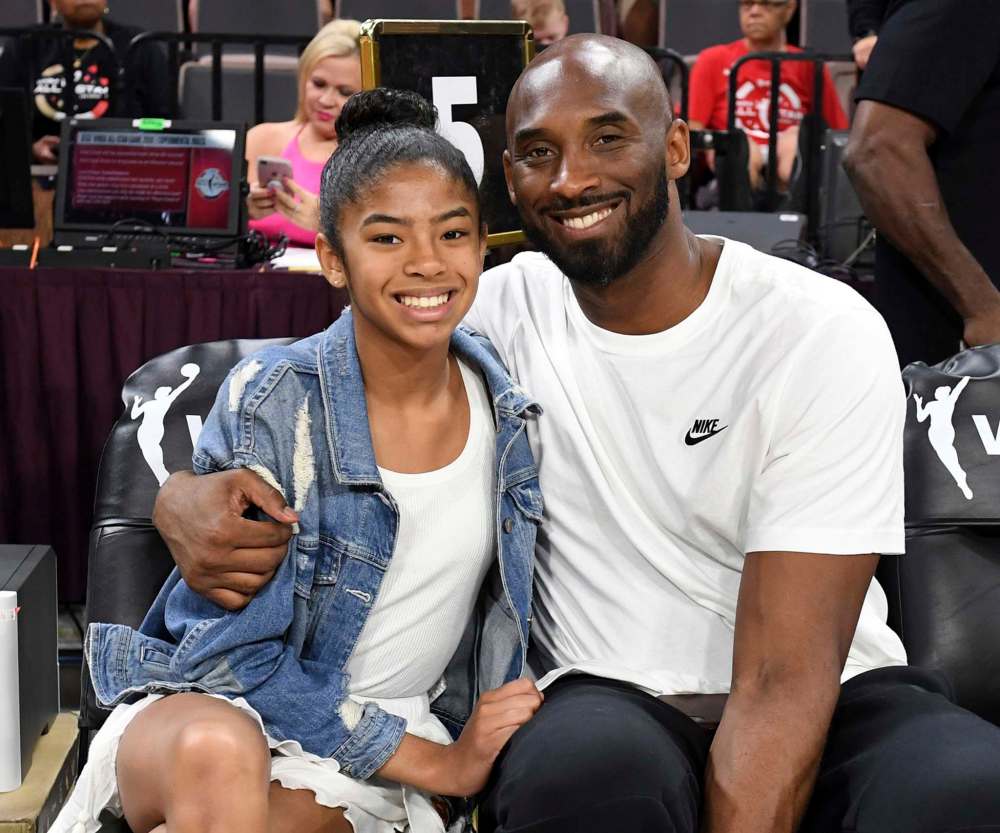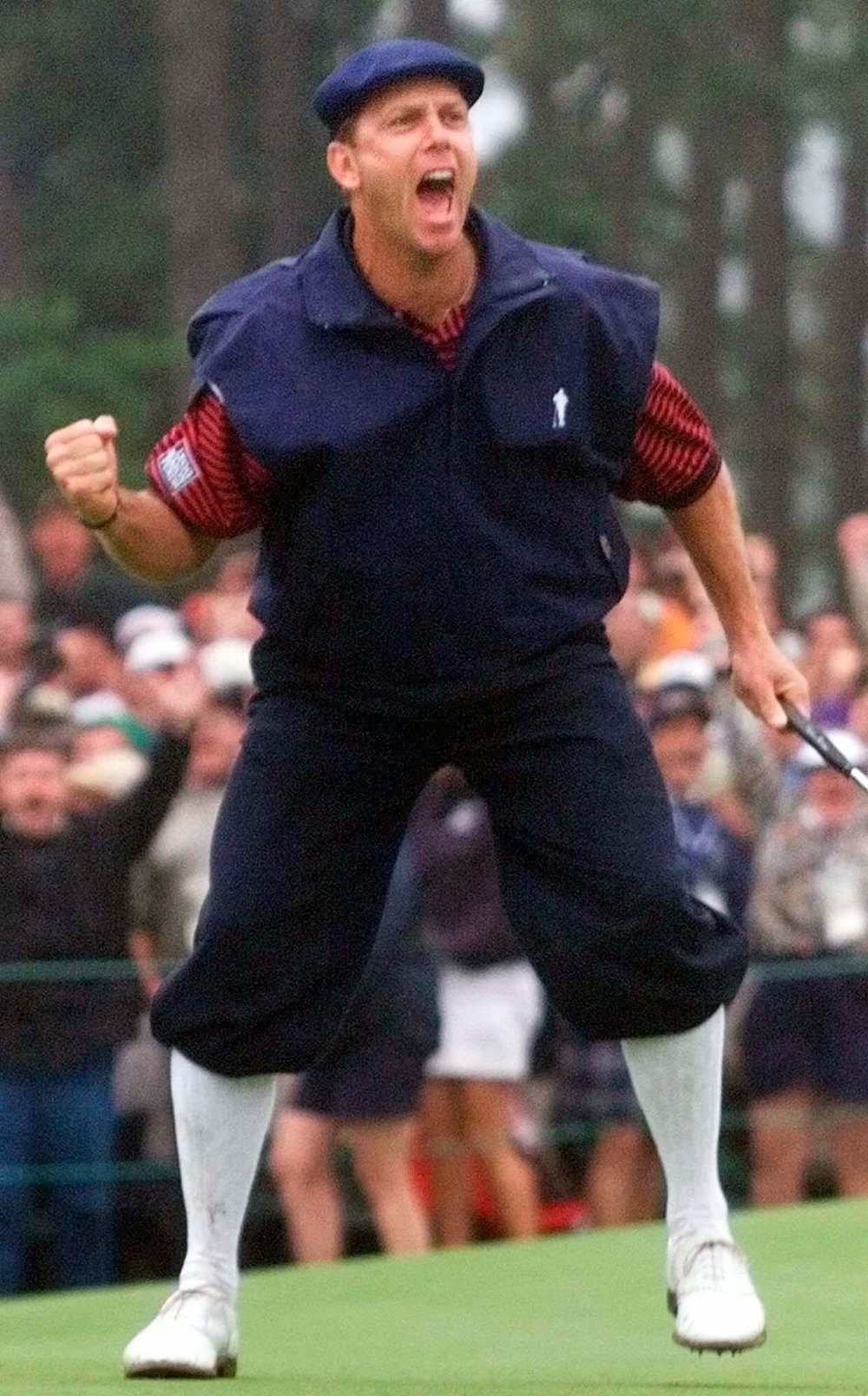Taken too soon
Kobe Bryant was the latest sports star to die in an air crash. Over the years, such incidents have claimed the lives of many icons
Advertisement
Read this article for free:
or
Already have an account? Log in here »
To continue reading, please subscribe:
Monthly Digital Subscription
$1 per week for 24 weeks*
- Enjoy unlimited reading on winnipegfreepress.com
- Read the E-Edition, our digital replica newspaper
- Access News Break, our award-winning app
- Play interactive puzzles
*Billed as $4.00 plus GST every four weeks. After 24 weeks, price increases to the regular rate of $19.00 plus GST every four weeks. Offer available to new and qualified returning subscribers only. Cancel any time.
Monthly Digital Subscription
$4.75/week*
- Enjoy unlimited reading on winnipegfreepress.com
- Read the E-Edition, our digital replica newspaper
- Access News Break, our award-winning app
- Play interactive puzzles
*Billed as $19 plus GST every four weeks. Cancel any time.
To continue reading, please subscribe:
Add Winnipeg Free Press access to your Brandon Sun subscription for only
$1 for the first 4 weeks*
*$1 will be added to your next bill. After your 4 weeks access is complete your rate will increase by $0.00 a X percent off the regular rate.
Read unlimited articles for free today:
or
Already have an account? Log in here »
Hey there, time traveller!
This article was published 01/02/2020 (2062 days ago), so information in it may no longer be current.

It remains uncertain precisely what caused a private helicopter to crash into a foggy hillside outside Los Angeles last Sunday, killing nine people, including one of the greatest basketball players of all time.
What is certain is the crash that claimed the lives of NBA legend Kobe Bryant, his 13-year-old daughter, Gianna “Gigi” Bryant, and seven others, has united the sporting world in grief.
“I haven’t felt a pain that sharp in a while,” Shaquille O’Neal, Bryant’s teammate for three NBA titles, said on TV as tears ran down his cheek. “It was like a triple stabbing to the heart. The last time I talked to him, I asked him to get 50 (points), and he got 60 (in the final game of his career). It hit all of us out of nowhere. I didn’t want to believe it … I lost a little brother.”
Bryant, 41, retired in 2016 as a five-time NBA champion, 11-time All-NBA first-team selection, 2008 MVP, two-time Finals MVP, 18-time All-Star and four-time All-Star MVP who spent his 20-year career with the Los Angeles Lakers. He also won gold medals with USA Basketball at the 2008 Beijing Olympics and 2012 London Olympics.
The cause is under investigation, but one thing that remains clear is that tragedies of this nature are too common, as we see from today’s list of Five Air Crashes that Claimed the Lives of Sports Heroes:
5) The doomed star: Blue Jays legend Roy Halladay
The ill-starred flight: Pitcher Roy Halladay, arguably the greatest player in the history of the Toronto Blue Jays, reportedly loved two things — throwing baseballs and flying airplanes. It was the latter that led to his death on Nov. 7, 2017, at the age of 40, when the ICON A5 amphibious plane he was flying crashed into shallow water off the Gulf of Mexico.
“His plane was being flown erratically, close to homes at one point and then 10 feet above the water before climbing and descending nose first into the Gulf near New Port Richie, Florida,” according to forbes.com.
Halladay, nicknamed “Doc,” broke into the majors with the Blue Jays in 1998. He won one American League Cy Young award and was selected to six All-Star games during his tenure with the team. However, the team’s success didn’t not match up with Halladay’s and the Jays never qualified for the post-season. It took a trade to the Phillies for him to see the playoffs, and it was in 2010 that Halladay had his greatest moments on the field — he pitched a perfect game against the Marlins, and then five months later, against the Cincinnati Reds, he pitched just the second no-hitter in MLB playoff history.
After retiring from baseball following the 2013 season, Halladay pursued his childhood dream of becoming a pilot. He was the only person on his light aircraft when it hit the water. Air traffic control said it did not receive any mayday distress signals from Halladay, whose autopsy later revealed he had morphine, amphetamine and a sleeping aid in his system, along with a trace amount of alcohol.
It was later revealed he had privately struggled with addiction to painkillers after his retirement. The combination of drugs in his system indicates the beloved Hall of Famer likely was impaired at the time of his fatal crash.
4) The doomed star: Golf legend Payne Stewart
The ill-starred flight: Payne Stewart was not your typical golfer. He could be brash and impetuous in a sport known for its civility. He rose to fame partly because of his graceful swing, but also because his clothes were as colourful as his personality.
“His outlandish plus-fours, tams and elegant outfits make him unmistakable on the course,” reads his biography on the World Golf Hall of Fame website.
On Oct. 25, 1999, just four months after winning his third major championship on the PGA Tour — the 1999 U.S. Open — Stewart, 42, boarded a chartered Learjet Model 35. He was heading to the Tour Championship in Texas, a big-money event for the 30 best golfers on the PGA Tour. Before arriving at the Houston tournament he planned to stop in Dallas to discuss a course design project.
The Learjet, with its two pilots and four passengers, took off from Orlando International at 9:19 a.m. It never reached its destination and millions of TV viewers witnessed the tragedy of its final flight. It wasn’t long before air traffic control knew something was wrong. The pilots lost contact and the plane was off course.
Fighter jets were sent up to monitor the situation, but they were helpless to intervene.
“All reported the windows fogged or frozen and no sign of life. For nearly four hours, first in great confusion and then heartrending resignation, the saga played out on CNN as the Learjet porpoised through the air. Stuck in a climb, it bumped up against its maximum altitude of 48,900 feet, descended to a level where its engines functioned more efficiently and then climbed back to its apex over and over until it ran out of fuel,” Golf Digest magazine recalled of that day.
The frozen windows were proof the plane’s pressurization system had failed, starving the occupants of oxygen. The doomed plane continued on autopilot until, fuel exhausted, it plunged from the skies into a field near Mina, S.D. Also killed were his agents, Robert Fraley and Van Ardan, golf course designer Bruce Borland, the pilot Michael Kling, 42, and first officer Stephanie Bellegarrigue, 27.
3) The doomed stars: The 1961 U.S. figure skating team
The ill-fated flight: The future couldn’t have looked brighter for sixteen-year-old Laurence Owen at the start of 1961. In January, she won the women’s crown at the U.S. Figure Skating Championship. The next month, she was featured on the cover of Sports Illustrated magazine, which called her the “most exciting U.S. skater.”
On Valentine’s Day, Owen and the rest of the 18-member U.S. team boarded Flight 548, a Boeing 707. The young athletes were on their way to compete at the 1961 World Figure Skating Championships in Prague. It was their chance to continue the dominance of U.S. teams in the postwar era, but they never made it.
On Feb. 15, 1961, the 18-member team was killed in a plane crash in Berg-Kampenhout, Belgium. The plane reportedly circled the Brussels airport several times and it became clear to observers the pilots were fighting for control of the jetliner.
Here’s what Time magazine reported at the time: “It was shortly before 10 o’clock next morning when the 707 neared Brussels. Something must have been wrong in the cockpit: for the last 20 minutes of flight, Pilot Louis Lambrechts did not contact Brussels Airport. He made a wheels-down approach, but went round again, possibly because a Caravelle jet was taking off. On his second turn, breasting the flat fields nearby at 500 feet, he increased his speed, wrapped the giant 707 into an almost vertical bank. Brussels tower flashed the emergency signal, and fire trucks and ambulances began rolling down the landing strip.”
No one survived. Rescue workers recovered Team USA jackets and copies of the Sports Illustrated issue featuring Owen. The worst crash on Belgian soil, all 72 people on board were killed.
The cause of the crash remains a mystery, although mechanical failure was suspected. It was the worst air disaster involving a U.S. sports team until November 1970, when 37 players on the Marshall University football team were killed in a plane crash in West Virginia.
2) The doomed stars:Russian Hockey Team Lokomotiv
The ill-starred flight: On Sept. 7, 2011, head coach Brad McCrimmon, fellow coaches and players from the famed Lokomotiv Yaroslavl professional hockey team of Russia’s Kontinental Hockey League, boarded an aging Yakovlev Yak-42 charter aircraft. McCrimmon, nicknamed “The Beast” during his 18 years as an NHL defenceman, had recently left his home in Detroit to coach this team. They were heading to Minsk, Belarus, to kick off the 2011-2012 hockey season.

As sportsnet.ca noted: “Twenty-three Russians, three Ukrainians, three Czechs, three Belarusians and a Slovak, a German, a Swede, a Latvian and a Canadian. One of the proudest teams in the Kontinental Hockey League. A 52-year-old franchise, as storied as any in Russia, about to commence an eight-month campaign against 23 teams spread across eight time zones of the former Soviet Union, each team fighting for the Gagarin Cup, Russia’s greatest hockey prize.”
That game would never happen.
The plane crashed on takeoff near the Russian city of Yaroslavl, killing all but one of the 44 (some reports say 45, others 43) people on board. The plane overran the runway before briefly lifting off, striking an antenna mast, catching fire and crashing near the bank of the Volga River.
The crash was later blamed on a host of factors, including poor training. It was revealed the pilot had used falsified documents to obtain permission to fly the aircraft, and both crew members lacked the necessary training. The sole survivor was the plane’s flight engineer. Noted USA Today: “The league cancelled all games for five days while in mourning before rebuilding the team’s roster to finish the season. Nine of the victims were former NHL players.”
The crash shattered lives around the globe and shook the hockey world. “Brad was my hero,” Kelly McCrimmon, current GM of the Vegas Golden Knights and owner of the Brandon Wheat Kings, told the Free Press hours after his older brother died in the crash. “We were a year apart. We grew up together and did everything together. We were a close family and I was his biggest fan. I mean that.”
Tweeted former NHLer Jeff O’Neill: “Brad McCrimmon my very first NHL roommate. No one loved hockey more! Love you ‘Beast’ you taught me so much about respect.”
1) The doomed stars: Four Saskatchewan Roughriders and one Winnipeg Blue Bomber
The ill-starred flight: Sixty-four years later, it remains Western Canada’s worst aviation disaster and the sixth-most catastrophic loss of life in the history of Canadian flight. It was Trans-Canada Airlines Flight 810, headed to Calgary from Vancouver on Dec. 9, 1956 following the East-West Shrine all-star game at Empire Stadium.
Some of the biggest gridiron stars of the day — Bud Grant, Jackie Parker and Normie Kwong — were supposed to be on the four-engine DC-4 North Star, but failed to make it for a variety of reasons. Kwong, the future lieutenant-governor of Alberta, cancelled his plans to be on the flight to stay behind to woo the woman who eventually became his wife.
On board, however, were five all-stars — Saskatchewan Roughriders’ Mel Becket, Mario DeMarco, Ray Syrnyk and Gordon Sturtridge, and Winnipeg Blue Bombers offensive guard Calvin Jones. Tragically, the plane crashed into Mount Slesse — known as “The Fang” — after encountering severe icing and turbulence over the mountains.
All 62 people on board, including the five football heroes, were killed.
“For five agonizing months, it was as if TCA Flight 810 had entered the Bermuda Triangle. Despite an extensive search involving hundreds of reconnaissance flights, the impact scene wasn’t discovered until May 1957, near Chilliwack,” according to the CFL’s website.
Because of the remoteness of the site, the wreckage was left on the mountainside, and some remains were interred in two common graves on the mountain. Jones, who played one year with the Bombers in the Western Interprovincial Football Union, was supposed to have been on an earlier flight, but overslept.
“A guard, Jones became the first collegiate football player ever to appear on the cover of Sports Illustrated in its inaugural year (1954). A year later, he became the first black player to win the Outland Trophy as the top lineman in U.S. college football,” the Vancouver Sun noted in 2012.
The debris field, still visible when the snow melts, was declared an official heritage site by the B.C. government in 1995.
doug.speirs@freepress.mb.ca



